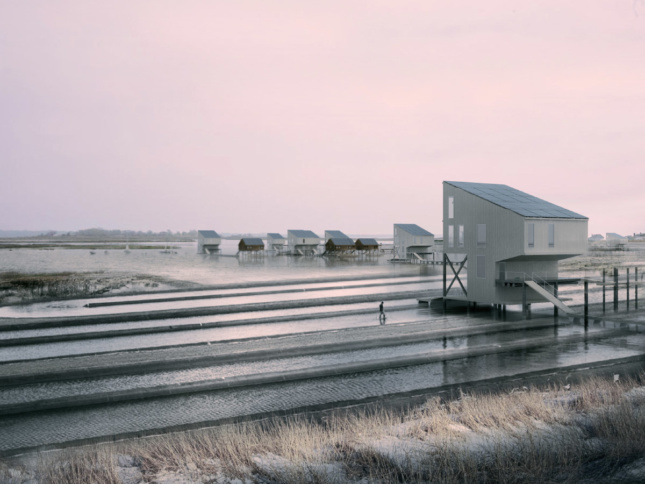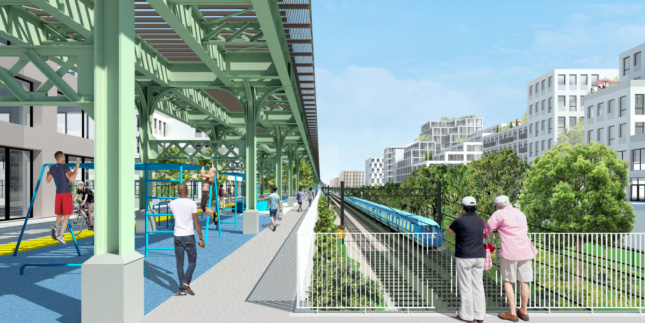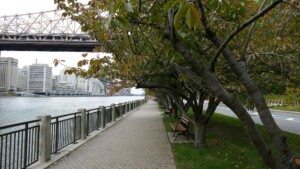Picture New York, 2040: Buses replace the subway at night, but when they’re open, subways are quieter, wheelchair-accessible, and clean. Everyone’s ditched tiny apartments for cozy mother-in-law units, built into single- family suburban homes. Working in the Bronx and living in Brooklyn isn’t a two-hour slog anymore, because there is rail service from Co-op City to Sunset Park. Craving fresh air? The national park in the New Jersey Meadowlands is a one-train ride from Queens, or there’s a long-haul hike from the Catskills to the Pinelands.
This is a sliver of the tristate future envisioned by the Regional Plan Association (RPA), a nonpartisan, nonprofit Manhattan-based organization that periodically analyzes the region from exurbs to downtowns to generate recommendations for a thriving future. When all 782 towns and cities in the tri-state area do their own planning and zoning, true regional planning seems daunting. The almost 400-page doorstopper of a plan, the RPA’s fourth since 1922, contains recommendations on a range of issues, from closing health disparities to fairer school redistricting and property tax reform, to making it easier to reverse-commute or travel from suburb to suburb without a car.
The New York-New Jersey–Connecticut area is home to 23 million people, and only a third of them live in New York City proper. With that distribution in mind, the RPA identified four top priorities that affect everyone’s life. The group believes that, for the next 25 years, a thriving region depends on fixing the MTA, constructing more affordable housing to prevent displacement, building equity in one of the most unequal regions in the area, and adapting to rising sea levels.

Meadowlands would look like as a national park. (Courtesy RPA)
“Our plans carry zero weight of law, but they are very influential,” RPA President Tom Wright told reporters at a November briefing.
It’s not possible to analyze all of the plan’s 61 prescriptions here, but there are key takeaways for architects, planners, and policymakers who live and practice in the region. The idea that the subway needs a total overhaul is a no-brainer to anyone who has been late due to massive train delays. To improve the system, the group wants to reconsider around-the-clock subway service. Surface transit would replace trains between 12:30 a.m. and 5 a.m. on weeknights, as only 1.5 percent of daily riders use the service during these four and a half hours, almost 20 percent of the day. Ending 24/7 service, the RPA argues, would allow the beleaguered MTA to make needed repairs faster, now that there are more riders than ever.
New Yorkers didn’t take kindly to the idea. Commuters took to Twitter to denounce “the worst idea ever,” and even Mayor Bill de Blasio weighed in, calling full service a “birthright.” If current trends continue, the city’s growth rate from 2015– 2040 will be half of its 1990–2015 rate, but NYC officials say the city doesn’t have enough infrastructure to support more than nine million residents, even though the RPA believes the region (including NYC) could accommodate four million more people and add two million jobs. The organization argues that more and better transit options— and more affordable housing— will prevent the region from turning into California’s Bay Area and make it easier to grow inclusively.
Packed trains and sky-high rents reflect many people’s desire to live in the New York City area, but unchecked housing costs could put a damper on growth. Adding more units—two million more— would alleviate the real estate crunch over 25 years. To meet demand, the RPA estimates that changing zoning near train stations could allow 250,000 homes to be created just on surface parking near rail lines while maintaining the neighborhood balance of schools and social spaces. Reforming zoning restrictions could also encourage homeowners to create accessory dwellings units (mother-in-law apartments) within the existing building envelope, while NYC’s 12 FAR cap could be lifted to build up density. Value capture from real estate development, especially those that benefit from big-ticket projects, could fund affordable housing near transit.
All housing construction will be in vain, however, if the region doesn’t step up to address the immediate and terrifying effects of climate change. The RPA wants to reduce carbon dioxide emissions via a California-style cap-and-trade plan, and convene a regional commission to help local governments adapt to extreme weather and rising seas. But, according to the RPA, the carbon pricing system we have isn’t comprehensive enough; the region should switch to California’s model, which does more to reduce emissions by covering those from buildings, transportation, power production, and industry.

One million people from Connecticut to New Jersey live in areas likely to flood, and municipalities are gearing up to fight Hurricane Sandy-like storm surges. There is less emphasis, though, on the everyday flooding that’s likely to result from sea-level rise in the near future; the RPA says areas that can’t be protected should be gradually transitioned to higher ground. A tristate regional coastal commission would help communities plan for sea-level rise, and a small surcharge on property insurance would be used to fund resiliency measures like buyouts and coastal hardening.
The retreat from vulnerable areas is painful for people who have built lives there, but there are opportunities in the changes. A national park in the marshy, industrial Meadowlands would provide recreation space and educate visitors on climate change mitigation. Denser Meadowlands towns like Secaucus, New Jersey, would be protected from sea-level rise, while the Teterboro Airport and surrounding communities would retreat, and nature would take over.
To illustrate these recommendations more richly, the RPA applies its thinking to nine sites, imagining what they could be in 2040. In that year, Jamaica, Queens, has capitalized on its rich transit connections and proximity to JFK Airport to become a destination in its own right, while retaining its income and ethnic diversity. Further east, Long Island’s central Nassau County is a “model suburb” thanks to regionally integrated schools and a new North Shore–South Shore rail link that’s made it easier to access job centers in Hempstead and Garden City.
“Nothing is off the table,” Wright said.














